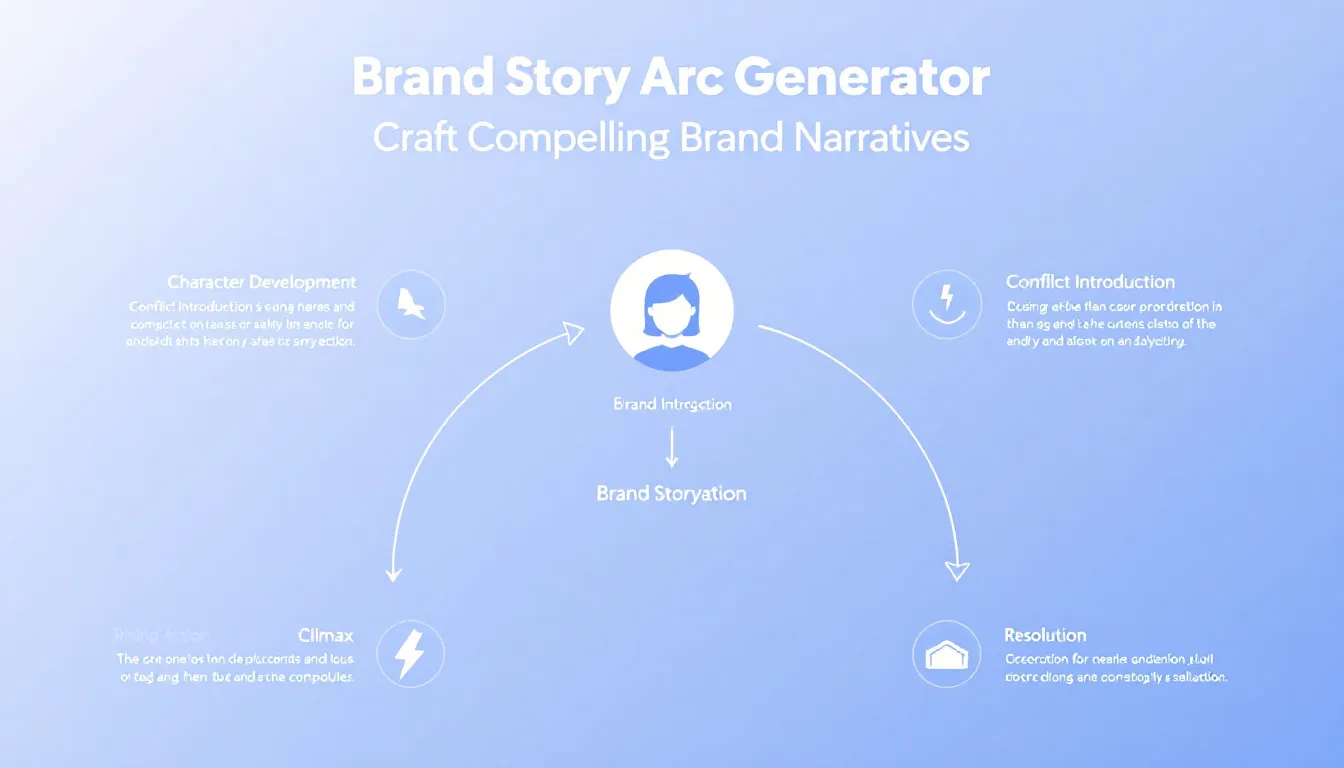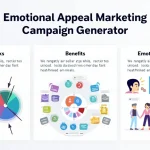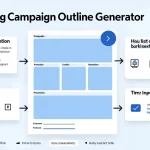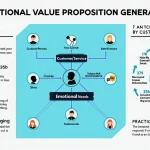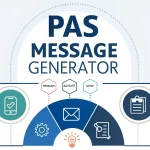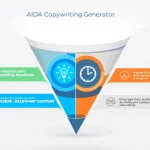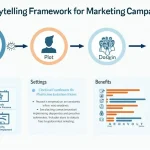Is this tool helpful?
How to Use the Brand Story Arc Generator Effectively
The Brand Story Arc Generator is designed to help businesses create compelling narratives that resonate with their target audience. Here’s a detailed guide on using each field:
Input Fields Guide
- Brand Name: Enter your company or product name. Example inputs: “GreenLife Organics” or “SwiftTech Solutions”
- Target Audience: Specify your ideal customer demographic and psychographic details. Example: “Eco-conscious millennials aged 28-40 with disposable income” or “Small business owners seeking technology solutions”
- Key Challenges: Detail the primary problems your audience faces. Focus on emotional and practical pain points that your brand addresses
- Brand Values: List core principles that define your brand identity and mission
- Desired Outcome: Describe the transformation or resolution you want your audience to experience
Understanding Brand Story Arc Generation
A brand story arc is a narrative framework that takes customers on an emotional journey from problem recognition to solution discovery. This tool employs strategic storytelling principles to craft narratives that build strong emotional connections with target audiences.
Core Components of Brand Storytelling
- Character Development (Your Target Audience)
- Conflict Introduction (Key Challenges)
- Rising Action (Brand Intervention)
- Climax (Solution Presentation)
- Resolution (Desired Outcome)
Benefits of Using the Brand Story Arc Generator
1. Enhanced Emotional Connection
Well-crafted brand stories create deeper emotional bonds with customers, leading to:
- Increased brand loyalty
- Higher customer retention rates
- More effective word-of-mouth marketing
- Stronger brand advocacy
2. Consistent Brand Messaging
The generator ensures consistency across all marketing channels by:
- Maintaining uniform narrative elements
- Aligning brand values with storytelling
- Creating cohesive marketing messages
3. Time and Resource Efficiency
Benefits include:
- Reduced time in story development
- Streamlined content creation process
- Consistent quality in narrative output
Practical Applications and Use Cases
Example 1: Product Launch Campaign
Brand: EcoMove Electric Bikes
- Target Audience: Urban professionals aged 25-45 concerned about environmental impact
- Key Challenges: Traffic congestion, environmental concerns, rising fuel costs
- Brand Values: Sustainability, innovation, urban mobility
- Desired Outcome: Empowerment through eco-friendly transportation
Example 2: Service Industry Transformation
Brand: MindfulSpace Therapy
- Target Audience: Working professionals experiencing anxiety and stress
- Key Challenges: Work-life balance, mental health stigma, accessibility to care
- Brand Values: Compassion, accessibility, professional excellence
- Desired Outcome: Normalized mental health care and improved well-being
Problem-Solving Capabilities
Narrative Structure Development
The generator addresses common storytelling challenges by:
- Identifying key narrative elements
- Structuring emotional progression
- Maintaining narrative coherence
- Ensuring brand alignment
Audience Connection Strategy
The tool helps brands:
- Identify emotional triggers
- Create relatable scenarios
- Develop authentic voice
- Build trust through storytelling
Frequently Asked Questions
Q: How long should my brand story be?
A: The ideal length varies by platform and purpose, but focus on creating a compelling narrative that captures attention within the first few seconds while maintaining engagement throughout.
Q: Can I use the same story across different platforms?
A: Yes, but adapt the format and length while maintaining core narrative elements to suit each platform’s unique characteristics.
Q: How often should I update my brand story?
A: Review and refresh your brand story annually or when significant changes occur in your brand positioning, target audience, or market conditions.
Q: What makes a brand story effective?
A: Effective brand stories are authentic, relatable, emotionally engaging, and align with both company values and customer needs.
Q: Should I include multiple customer personas in my brand story?
A: Focus on one primary persona per story to maintain clarity and emotional impact. Create separate narratives for different target segments if needed.
Q: How do I measure the success of my brand story?
A: Track engagement metrics, customer feedback, brand recall, and conversion rates to assess story effectiveness.
Best Practices for Brand Story Implementation
1. Authenticity First
- Stay true to brand values
- Use genuine customer insights
- Maintain consistent voice
2. Emotional Connection
- Focus on human elements
- Create relatable scenarios
- Build emotional bridges
3. Clear Resolution
- Demonstrate tangible benefits
- Show transformation journey
- Provide evidence of success
4. Multi-channel Integration
- Adapt story formats
- Maintain message consistency
- Optimize for each platform
Important Disclaimer
The calculations, results, and content provided by our tools are not guaranteed to be accurate, complete, or reliable. Users are responsible for verifying and interpreting the results. Our content and tools may contain errors, biases, or inconsistencies. We reserve the right to save inputs and outputs from our tools for the purposes of error debugging, bias identification, and performance improvement. External companies providing AI models used in our tools may also save and process data in accordance with their own policies. By using our tools, you consent to this data collection and processing. We reserve the right to limit the usage of our tools based on current usability factors. By using our tools, you acknowledge that you have read, understood, and agreed to this disclaimer. You accept the inherent risks and limitations associated with the use of our tools and services.
